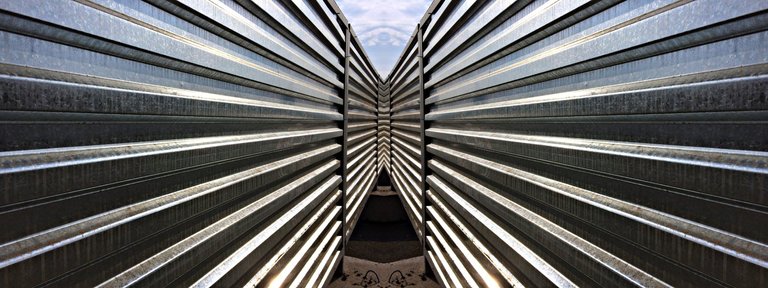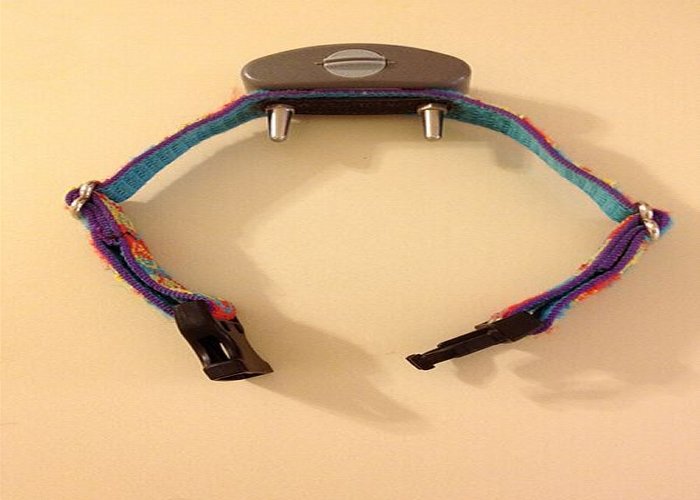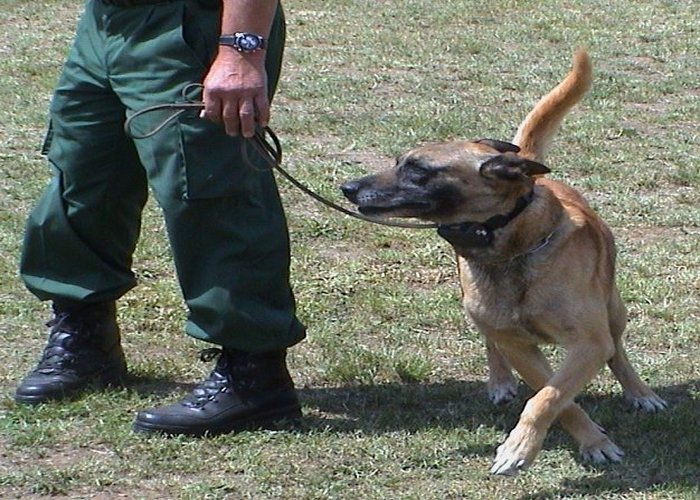Good day Steemians, and welcome to my blog this new week. I know quite well that a lot of us may not had heard the term invisible fence before (or have you?) and are surely enthusiastic to know what's it that I am up to with this article. Well before I unfold the real course of this article as well as give a simplified definition to what invisible fence is, let me start by describing a scenario that most of us might have witnessed before in our lives.

[Source: pexels commons. CC0 licensed]
Imagine you were strolling down the street and noticed a dog running across a lawn to join you on your stroll mission; and just when he was about to hit the sidewalk, he inexplicably came to an abrupt stop just at the edge of the lawn as though he had hit a wall [2]. And you really wanted the dog to accompany you on your strolling expedition. You then threw some meaty bones into the lawn; the dog quickly devoured it. But when you placed the baits outside the perimeter of the lawn, the dog would make an initial attempt to get at it, but would always stop short of the lawn boundary just before the sidewalk, disobeying all the entreaties to go beyond the lawn. Incredibly unbelievable, right?!
Naturally, you will wonder what could have caused the dog to stop? Is there a possibility that there is an invisible fence that restrained the dog from running beyond the lawn perimeter? [2]. To a naive person like you, the answer could be no such thing or, at best, you associate it with some mysterious manifestation or superstitious craps, and perhaps, begin an endless fasting 😂.
However, someone with knowledge of invisible fence systems will answer in the affirmative. Why? Because the marriage of science, technology electronics and training has made it possible for pet owners to restrict the movements of their animals within a predefined boundaries. I guess you can now tell what the theme of this article is about? Sure, you can. That said, let's look at the definition of invisible fence.

[A shock collar. Source: Wikimedia commons. Author: Polymath38. CC BY-SA 4.0 licensed]
Invisible fence system
Invisible fence system is also known with various names such as electronic containment system, fenceless boundary, pet fence, etc. It is defined, according to Wikipedia, as:
...an electronic system designed to keep a pet or other domestic animal within a set of predefined boundaries without the use of a physical barrier. A mild electronic shock is delivered by an electronic collar if its warning sound is ignored.... Source
It was an invention of Richard Peck who also patented it shortly after invention in 1973. Invisible fence is used for a number of reasons including health and reproduction, housing covenants, keeping wild pets in check, leash laws, keeping pets from wandering about in the cities, etc [4].
The technology of invisible fence and how it works
Conventional invisible fences are made up of cables buried in the ground along a predefined borderlines. A transmitter that emits radio signals is connected to the buried cables. When this transmitter emits radio signals, the signals travel throughout the buried cables. [2]
Another essential part of an invisible fence system is the receiver which is built on a collar and is worn by your pet (dog). The receiver is inbuilt with ability to detect the radio signals traveling along the underground wires, and is capable of emitting a warning hum. [2, 1]

[A wireless network. Source: Wikimedia commons. Author: RRZEicons. CC BY-SA 3.0 licensed]
When an animal that's wearing a collar-bearing receiver is approaching the borderlines of the underground cables, the receiver will emit a warning sound which only the animal can hear. The function of this sound is to remind the animal that it would receive a static correction (i.e a mild electric shock) if it doesn't fall back and gets too close to the lines of the cables buried in the ground or matches it. In situations where the animal ignores the sound and gets too close or matches the boundary lines, it will receive a static correction, the so called mild electric shock, from the collar. [2, 3]
The stimulus is first applied slowly as the animal approaches but at a greater strength as it comes even closer. Typically, the animal learns to avoid the invisible fence location within a couple of hours. Invisible fence systems are a very effective way of containing animals within a set perimeter. [3]
The latest or improved version of invisible fence system is a wireless system and does not involve burying of cables in the ground to establish deterrent boundaries. Instead, it uses global positioning satellite technology (GPS) in the place of underground cables. Here, the boundaries are marked by GPS and only exist as a line on a computer. [1]
Training the animal to master the boundaries of an invisible fence system
Trainers of animals will first mount flags along the boundaries of an invisible fence system. And then, animals are taught to fall back whenever they hear the warning sound as they approach the mounted flags. Over a period of training, animals will recognize that getting nearer to the flags will trigger off a warning hum, and failure to fall back will lead to receiving a static correction. As they are repeatedly rewarded for stopping short of the flags, they will soon understand that the flags represent the boundary location and hence learn to respect and avoid them. [2]

[A dog being trained. Source: Wikimedia commons. Author: TheHidden. CC BY-SA 3.0 licensed]
The flags can then be removed eventually after the animals must have mastered how far they can travel within a set perimeter with neither receiving a static correction nor hearing the warning sound. [2]
Indeed...
Invisible fence systems allow you to keep your pets safe and close to home without the expense and trouble of building conventional fences. With a bit of training, your pet will soon be running around the yard without worry! Source
References for further reading
- [1] Theguardian.com
- [2] Wonderopolis.org
- [3] En.m.wikipedia.org
- [4] Science.howstuffworks.com
Yours truly,
@eurogee
Do You Blog About Science, Technology, Engineering, and Mathematics? If Yes, Patiently Read The Below Info


Join Euronation Community on Telegram and whatsapp through the below links to socialize with larger steemit community:

No Witnesses = No Steem Blockchain; If You Truly Love Here, Vote For Witnesses NOW!
Click This Link To Vote Now


Thank you for writing about invisible fences this week because I have been wondering for years how these work and am happy I learned how here today!
My pleasure that you like it @JerryBanfield
Sounds really interesting, can't wait for this technology to be implemented. Great post buddy.
Perhaps not popular in Africa but it has been in use since 70's.
...would this technology ever get to africa?!
This is good but how many of us can afford it
Technology is just not for the broke but we can always tag in to the beauty of it
Is it just applicable to just pets?
A lot of people can. Not popular in this part of the world but highly affordable. Thanks
@eurogee
Hi @eurogee!
Your post was upvoted by utopian.io in cooperation with steemstem - supporting knowledge, innovation and technological advancement on the Steem Blockchain.
Contribute to Open Source with utopian.io
Learn how to contribute on our website and join the new open source economy.
Want to chat? Join the Utopian Community on Discord https://discord.gg/h52nFrV
Hey..
First of all thanks for sharing this.
By this I come up to know this invisible fences!!
Thanks alot :)
My dog has such high drive he just powers through getting electrocuted. We bought the model for training (higher power). On max setting he completely ignores it. I was holding the button because he was barking at someone walking by the house. He sounded like a robot with that thing shocking his neck while he was barking. He basically just ignored it. We didn't use it for very long.
This doesn't work with an untrained dog; the dog has to be trained to recognize it. Not buy and wear.😂😂
Yes and to be fair we weren't using the invisible fence model. He's smart and easily trainable with most things. He just has an irrational fear of strangers and a high drive. If someone was walking by our yard and he thought they were a threat the invisible fence wouldn't even slow him down.
It was more a comment about my dogs issues than the effectiveness of invisible fences.